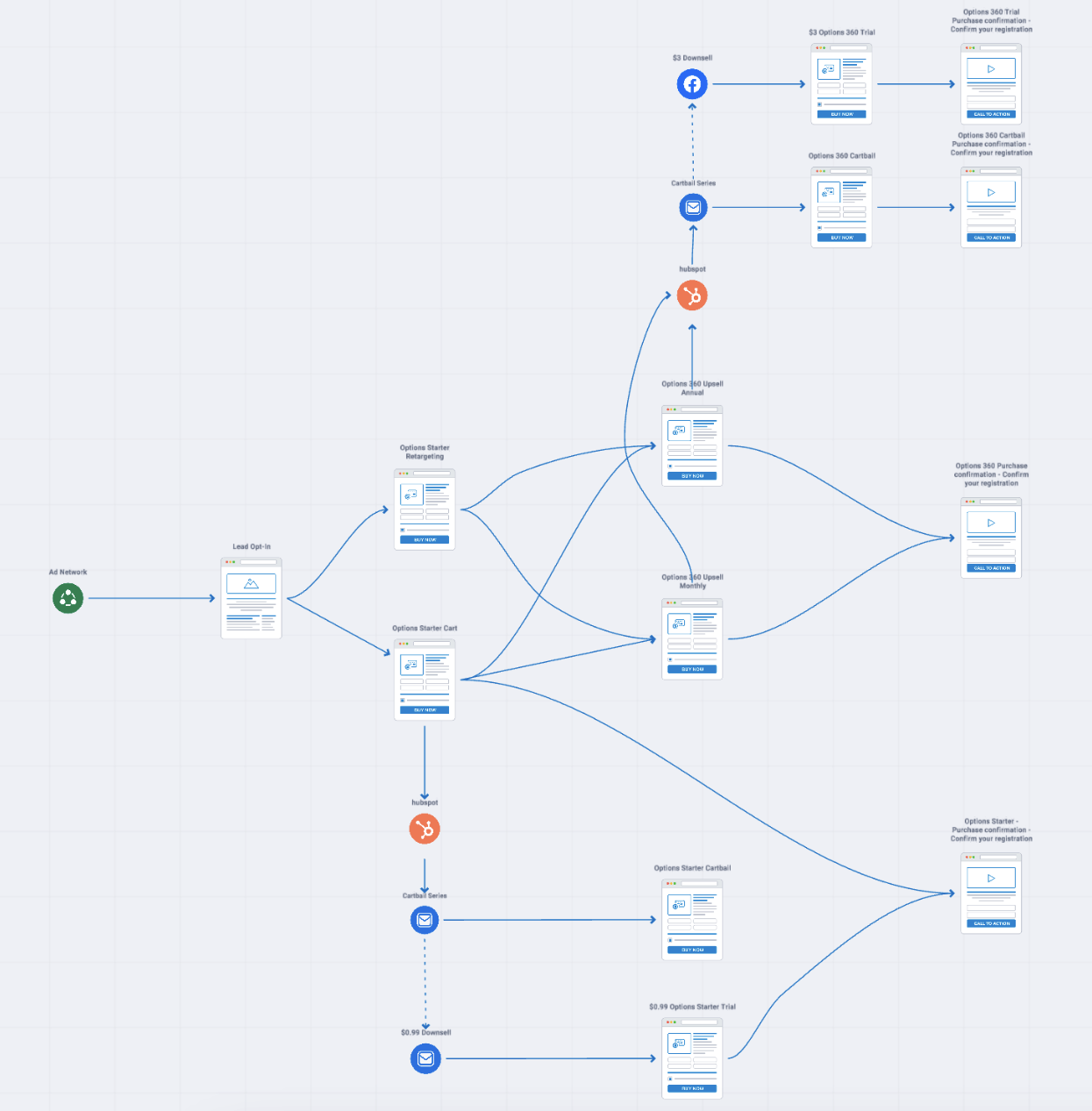In today’s rapidly evolving business landscape, agility is crucial for enterprises to stay competitive. A key aspect of enabling agility is building an effective marketing technology stack that supports the fast-paced nature of marketing activities. This article will guide you through the process of building an enterprise marketing technology stack that enables agility, helping you to streamline your marketing efforts and achieve better results.
Understanding the Concept of a Marketing Technology Stack
In simple terms, a marketing technology stack refers to the combination of tools and platforms that marketers use to manage and execute their marketing activities. It comprises various software applications, databases, and communication channels that work together to streamline marketing operations. A well-constructed marketing technology stack plays a crucial role in enabling agility within an enterprise.
When it comes to marketing, technology has become an indispensable part of the process. Gone are the days when marketers relied solely on traditional methods to reach their target audience. With the advent of digital marketing, the landscape has changed dramatically, and marketers now have a wide array of tools at their disposal.
One of the key components of a marketing technology stack is customer relationship management (CRM) software. This tool allows marketers to manage and analyze customer data, track interactions, and create personalized experiences. By leveraging CRM technology, marketers can gain valuable insights into customer behavior, preferences, and needs, which can then be used to tailor marketing campaigns and improve customer satisfaction.
Defining a Marketing Technology Stack
A marketing technology stack is a collection of technology tools and platforms that marketers use to create, manage, and analyze marketing campaigns. It encompasses a wide range of functionalities, including customer relationship management (CRM), marketing automation, and data analytics tools. The stack enables marketers to streamline their activities, optimize campaign performance, and drive better business outcomes.
Marketing automation is another essential component of a marketing technology stack. This technology allows marketers to automate repetitive tasks, such as sending emails, managing social media posts, and tracking campaign performance. By automating these tasks, marketers can save time and resources, allowing them to focus on more strategic initiatives.
Data analytics tools are also a crucial part of a marketing technology stack. These tools enable marketers to collect, analyze, and interpret data from various sources, such as website traffic, social media engagement, and customer interactions. By leveraging data analytics, marketers can gain valuable insights into their target audience, identify trends, and make data-driven decisions to optimize their marketing campaigns.
Importance of a Marketing Technology Stack in an Enterprise
Having a well-defined marketing technology stack is essential for enterprises looking to achieve marketing agility. It provides a centralized hub for managing marketing activities and streamlines processes, reducing manual efforts and improving efficiency. Additionally, a marketing technology stack facilitates data-driven decision-making, enabling enterprises to gather insights and leverage them to create targeted and personalized marketing campaigns.
Furthermore, a marketing technology stack allows for better collaboration and communication among different teams within an organization. With a centralized platform, marketers can easily share data, insights, and campaign assets with other departments, such as sales and customer service. This collaboration fosters alignment and ensures that all teams are working towards a common goal, ultimately driving better business outcomes.
In conclusion, a marketing technology stack is a powerful tool that empowers marketers to streamline their activities, optimize campaign performance, and drive better business outcomes. By leveraging the right combination of tools and platforms, marketers can create targeted and personalized marketing campaigns, improve customer satisfaction, and stay ahead of the competition in today’s digital landscape.
Key Components of an Agile Marketing Technology Stack
Building an agile marketing technology stack requires incorporating various key components that work together seamlessly to support marketing activities. Let’s explore some of the essential components:
Customer Relationship Management (CRM) Systems
A CRM system is a fundamental component of a marketing technology stack as it helps enterprises manage their customer relationships effectively. CRM systems enable marketers to store and organize customer data, track interactions, and engage with customers across multiple channels. By leveraging CRM systems, marketers can create personalized campaigns, enhance customer experiences, and drive customer loyalty.
Furthermore, CRM systems provide valuable insights into customer behavior and preferences. Marketers can analyze customer data to identify buying patterns, segment their audience, and tailor their marketing strategies accordingly. This level of personalization not only improves customer satisfaction but also increases the chances of conversion and repeat business.
Marketing Automation Platforms
Marketing automation platforms streamline repetitive marketing tasks, allowing marketers to focus on more strategic activities. These platforms enable the automation of email marketing, social media posting, lead nurturing, and more. By automating these processes, marketers can save time, increase productivity, and deliver consistent messaging across different channels.
Moreover, marketing automation platforms enable marketers to create sophisticated workflows and customer journeys. They can set up triggers and actions based on customer behavior, ensuring that the right message is delivered to the right person at the right time. This level of automation not only improves efficiency but also enhances the overall customer experience.
Data Analytics Tools
Data analytics tools are crucial for enterprises to gather actionable insights from their marketing efforts. These tools allow marketers to track campaign performance, measure key metrics, and identify patterns and trends. By leveraging data analytics, marketers can optimize campaigns in real-time, make data-driven decisions, and enhance overall marketing effectiveness.
Furthermore, data analytics tools provide marketers with a deep understanding of their target audience. By analyzing customer data, marketers can uncover valuable insights about customer preferences, interests, and behaviors. This knowledge enables them to create highly targeted and personalized marketing campaigns that resonate with their audience, leading to higher engagement and conversion rates.
In addition, data analytics tools facilitate A/B testing and experimentation. Marketers can test different variations of their campaigns, landing pages, and content to determine what resonates best with their audience. This iterative approach allows marketers to continuously optimize their marketing strategies and achieve better results over time.
Steps to Building an Agile Marketing Technology Stack
Building an agile marketing technology stack requires a systematic approach. Let’s break down the process into three key steps:
Identifying Your Marketing Needs
The first step in building an agile marketing technology stack is to identify your specific marketing needs. Every enterprise has unique requirements, and understanding these requirements is crucial for selecting the right tools and platforms. Conducting a thorough analysis of your existing marketing processes, identifying pain points, and setting clear objectives will help you determine the functionalities and capabilities you need in your stack.
For example, if your marketing team heavily relies on social media marketing, you may need tools that offer robust social media management capabilities. On the other hand, if content marketing is a significant part of your strategy, you might prioritize tools that facilitate content creation, distribution, and analytics.
Furthermore, it is essential to consider factors such as target audience, industry trends, and competitive landscape when identifying your marketing needs. By understanding your target audience’s preferences and behaviors, you can tailor your technology stack to effectively reach and engage them.
Selecting the Right Tools
Once you have a clear understanding of your marketing needs, the next step is to evaluate and select the right tools for your stack. Consider factors such as scalability, ease of integration, user-friendliness, and cost-effectiveness.
Scalability is crucial because as your business grows, your marketing needs will evolve. Choosing tools that can accommodate your future requirements will save you time and resources in the long run. Additionally, ensure that the tools you select can integrate seamlessly with your existing systems, such as your customer relationship management (CRM) software or email marketing platform.
User-friendliness is another important aspect to consider. Your marketing team will be using these tools on a daily basis, so it’s essential to choose tools that are intuitive and easy to navigate. This will minimize the learning curve and allow your team to maximize their productivity.
Cost-effectiveness is also a critical factor, especially for small and medium-sized businesses. Evaluate the pricing models of different tools and consider the value they provide in relation to their cost. Remember to factor in any additional expenses, such as training or implementation fees.
Integrating Your Marketing Technology Stack
Integration plays a vital role in ensuring your marketing technology stack operates smoothly and efficiently. Integration allows different tools and platforms to communicate and share data seamlessly.
When integrating your marketing technology stack, it is crucial to ensure that the selected tools can integrate with each other and with your existing systems. This will enable you to have a centralized view of your marketing activities and eliminate duplication of efforts.
For example, integrating your customer relationship management (CRM) software with your email marketing platform can provide valuable insights into customer behavior and preferences. This integration can help you personalize your email campaigns and improve customer engagement.
Furthermore, proper integration enables data synchronization, ensuring that information flows seamlessly between different tools. This eliminates the need for manual data entry and reduces the risk of errors or inconsistencies.
Additionally, consider the scalability and flexibility of your integration strategy. As your marketing needs evolve, you may need to add or replace tools in your stack. Choosing tools that offer flexible integration options will make it easier to adapt to future changes in your marketing technology stack.
In conclusion, building an agile marketing technology stack involves identifying your marketing needs, selecting the right tools, and integrating them seamlessly. By following these steps and considering factors such as scalability, user-friendliness, and integration capabilities, you can create a robust and efficient technology stack that empowers your marketing team to drive success.
Maintaining and Updating Your Marketing Technology Stack
Building an agile marketing technology stack is an ongoing process that requires regular evaluation and updates. Here are two important aspects to consider:
Regular Evaluation of Your Stack’s Performance
Regularly evaluate the performance of your marketing technology stack to identify areas for improvement. Analyze key metrics, track ROI, and gather feedback from your marketing team. By monitoring the performance, you can identify bottlenecks, fine-tune your processes, and make informed decisions to enhance the overall effectiveness of your stack.
Keeping Up with Emerging Marketing Technologies
The marketing technology landscape is constantly evolving, with new tools and platforms emerging regularly. To maintain agility, it is crucial to stay updated with the latest trends and advancements in marketing technology. Continuously evaluate new technologies that align with your marketing goals and consider integrating them into your stack if they can enhance your marketing capabilities.
Overcoming Challenges in Building an Agile Marketing Technology Stack
Building an agile marketing technology stack can present some challenges. Let’s discuss a couple of common challenges and how to overcome them:
Addressing Integration Issues
Integration issues can arise when combining various tools and platforms within a marketing technology stack. To address this challenge, choose tools that offer native integrations and robust APIs. Conduct thorough testing during the integration process and consider seeking assistance from technology experts specializing in system integration.
Ensuring Data Privacy and Security
As marketing technology stacks involve handling sensitive customer data, ensuring data privacy and security is critical. Implement proper data security measures, comply with data protection regulations, and regularly update your security protocols. Conduct regular audits and assessments to identify vulnerabilities and take necessary actions to mitigate any risks.
Managing Change in the Organization
Implementing an agile marketing technology stack requires change management efforts to ensure a smooth transition. Communicate the benefits of the new stack to stakeholders, provide adequate training to the marketing team, and foster a culture of continuous learning and adaptation. By addressing resistance to change, you can successfully integrate an agile marketing technology stack into your enterprise.
In conclusion, building an enterprise marketing technology stack that enables agility is crucial for businesses to thrive in today’s fast-paced marketing landscape. By understanding the concept of a marketing technology stack, incorporating key components, following a systematic approach, and addressing challenges, you can create a robust and agile stack that supports your marketing efforts and drives business success.



